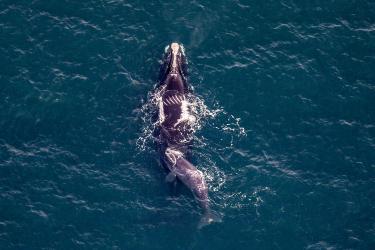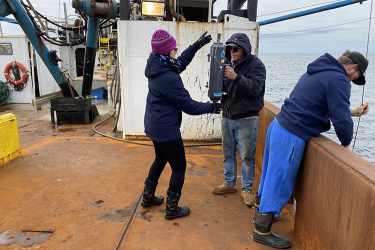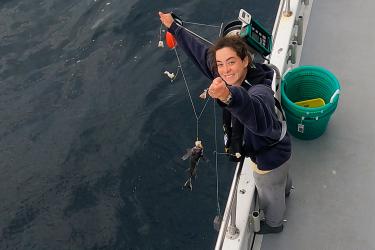We began Leg 2 on the F/V E.S.S Pursuit sailing out of Atlantic City, New Jersey. The weather was simply beautiful and very cooperative. Every now and then, we’d see some heat lightning in the clouds during the small hours of the morning, although it never became anything dangerous.
We sailed south where Atlantic surfclams are not very abundant, so the catches were very light or empty. This resulted in some very slow shifts, but sampling in these areas helps to define boundaries of where surfclam are found. We did catch some species of shellfish that are only found down south. One is the southern quahog, which looks similar to the ocean quahog. Ocean quahogs are much more abundant further north. Compared to the ocean quahog, the southern quahog is lighter in color, has more pronounced ridges, and has a much thicker shell.
Another shellfish we found was the chestnut clam, Astarte castanea. These animals are much smaller than the surfclams and quahogs and have a very beautiful, deep-brown colored shell.
Of all our surveys, the clam survey is the one on which you’ll find the most interesting and beautiful shells. For example, in one tow we found a knobbed whelk and a channeled whelk. The easiest way to tell them apart is the presence or absence of knobs on the “spire,” which is the whirled top part of the shell. It’s very common to find whelk shells, whole or broken. It’s fun to find a whole, perfect shell, but there is a rustic beauty to the ones that have large portions missing.
We did eventually catch some surfclams! They are much wider than they are deep and have a lovely deep blue-white color. With such slow shifts, we were excited to see some surfclams and collect biological information such as lengths, weights, DNA samples, and shells that we saved to be aged later. It also makes staying awake easier in those early morning hours.
And soon enough, leg 2 was over! We docked again in Atlantic City, New Jersey to switch out leg 2 and 3 scientists. This time, it was my turn to ride in the van back to Cape Cod, Massachusetts, as my time on the E.S.S. Pursuit has ended until next summer.








